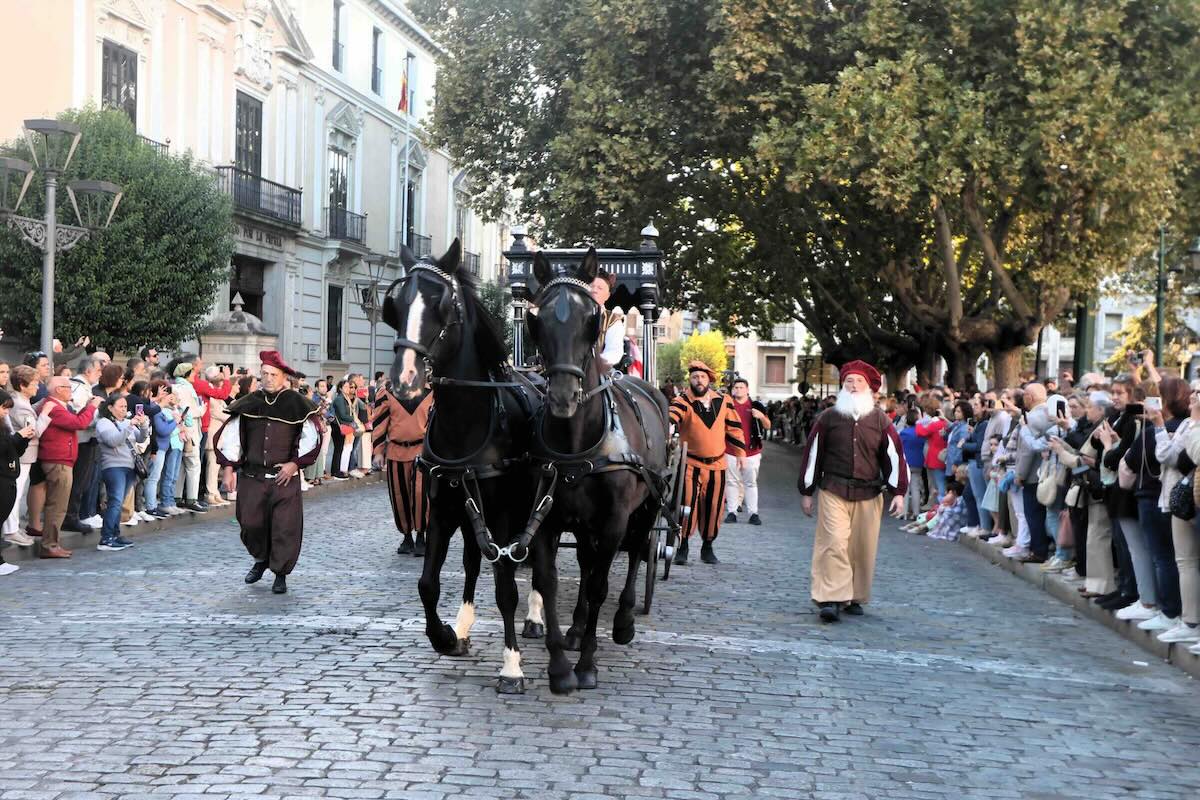
Thousands of people have attended a mock funeral in honour of one of the last great Irish chieftains Red Hugh O’Donnell.
One of the most celebrated figures in Irish history, O’Donnell died near the then capital of Spain, Valladolid, as he sought to persuade King Philip III to assemble a Spanish army to overthrow the English in Ireland.
Historians recount that his death on September 10 1602, aged 29, marked the last hope of Spanish intervention in the Irish campaign and the end of the old Gaelic Order.
In 2020, unsuccessful efforts by archaeologists to locate O’Donnell’s grave in Valladolid captured the imagination of the Spanish public and events have been held in the city to mark its close links with the chieftain.
The mock funeral began at dusk, with the placing of an Érin go Bragh flag and the old Spanish flag – the red, jagged Cross of Burgundy – on Red Hugh’s coffin.
It was followed by a reading of Red Hugh’s last will and testament in Spanish and English. It begins: “In the name of God, amen. Let these who shall see this last will and testament know that I, Lord O’Donnell of Ireland, being in bed, infirm in body of that illness, make my said testament in the following manner.”
The crowds were already five deep at the entrance to the Royal Palace in Valladolid as they waited patiently for the coffin to emerge. The parade included women in period dresses and dogs that symbolised the Irish wolfhound. The hearse was surrounded by pallbearers carrying lit torches.
The funeral cortege took the exact route from the Royal Palace to the site where the Old Franciscan monastery once stood. Within it was the Chapel of the Wonders, where Red Hugh was buried, as was, before him, Christopher Columbus for a time. The site is marked by a plaque in English and Spanish.
Large crowds also gathered at the site where there were speeches from the mayor of Valladolid, Jesús Julio Carnero, and the Irish ambassador to Spain, Frank Smyth.
Mr Smyth said Red Hugh had been a refugee fleeing unrest in his country and was able to avail of the generosity of the Spanish people at the time. Piper Jim O’Neill, who led the parade, played the Irish national anthem, a Spanish band the Spanish national anthem and proceedings ended with the playing of O’Donnell Abú.
On Saturday morning the same piper greeted Irish visitors to Simancas Castle with another rendition of the same tune. Simancas Castle is a major archive of the Spanish state. Red Hugh’s last will and testament was placed on display along with a 1599 letter from Red Hugh and Hugh O’Neill requesting the support of the Spanish king during the Nine Years’ War.
In an adjacent room, author Pedro Luis Chinchilla recounted the terrible fate of the prisoners of the Spanish armada after their ships were wrecked in gales off the north and west coasts of Ireland in 1588
Of the 1,650 Spanish prisoners who landed on Irish shores, some 1,100 of them were executed on the orders of Lord Deputy William FitzWilliam and Lord President Richard Bingham. Worse still, many Irish chieftains co-operated with the English, though others helped the Spanish.
![[Irish Republican News]](https://republican-news.org/graphics/title_gifs/rn.gif)
![[Irish Republican News]](https://republican-news.org/graphics/title_gifs/harp.gif)

